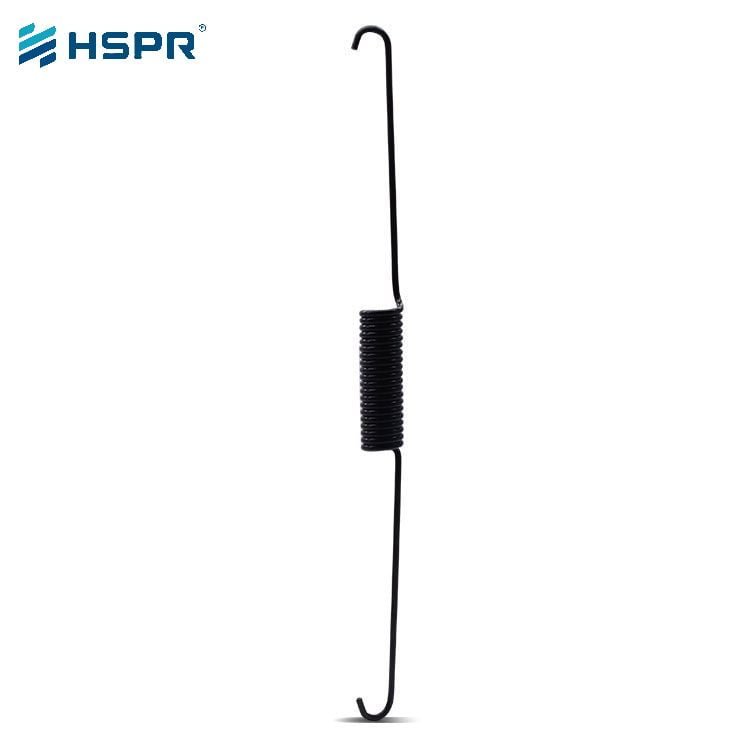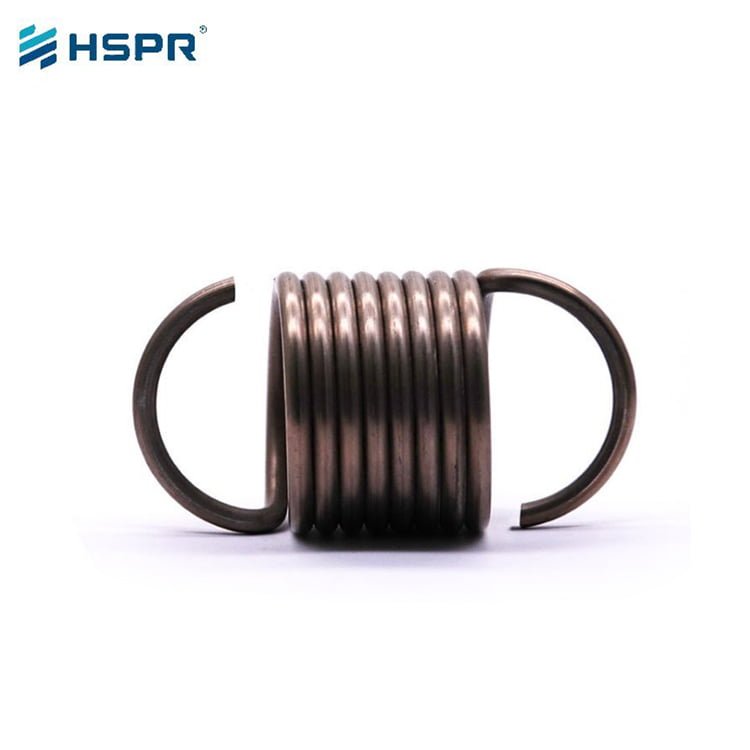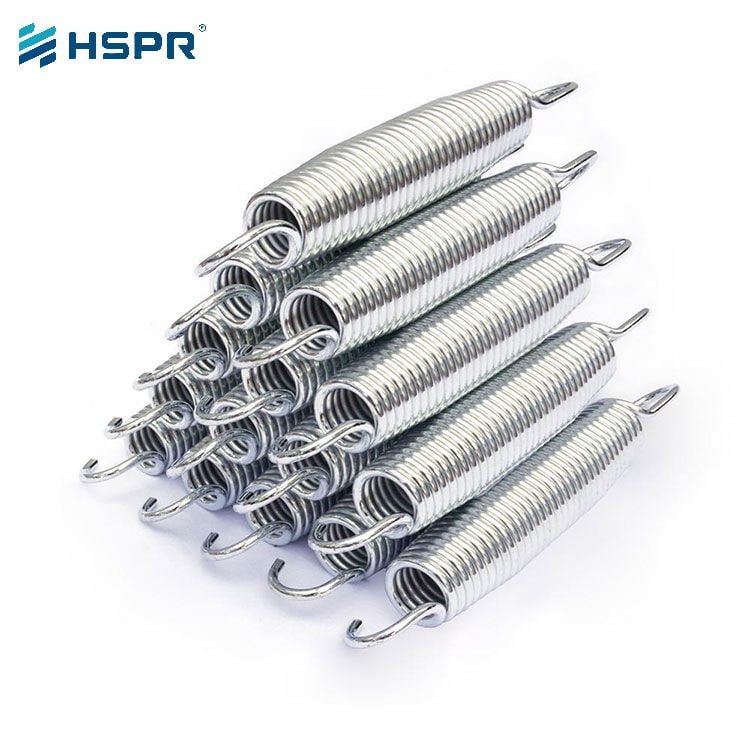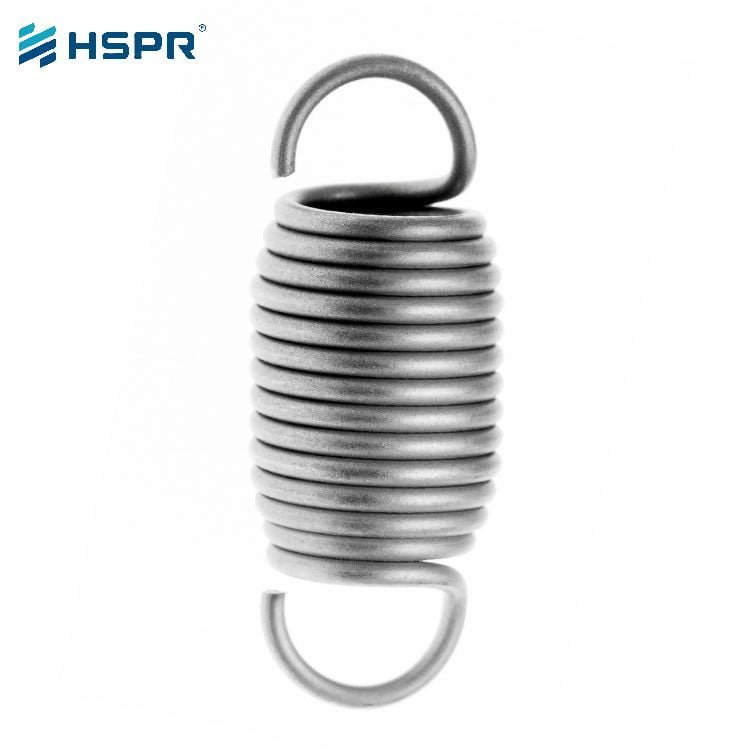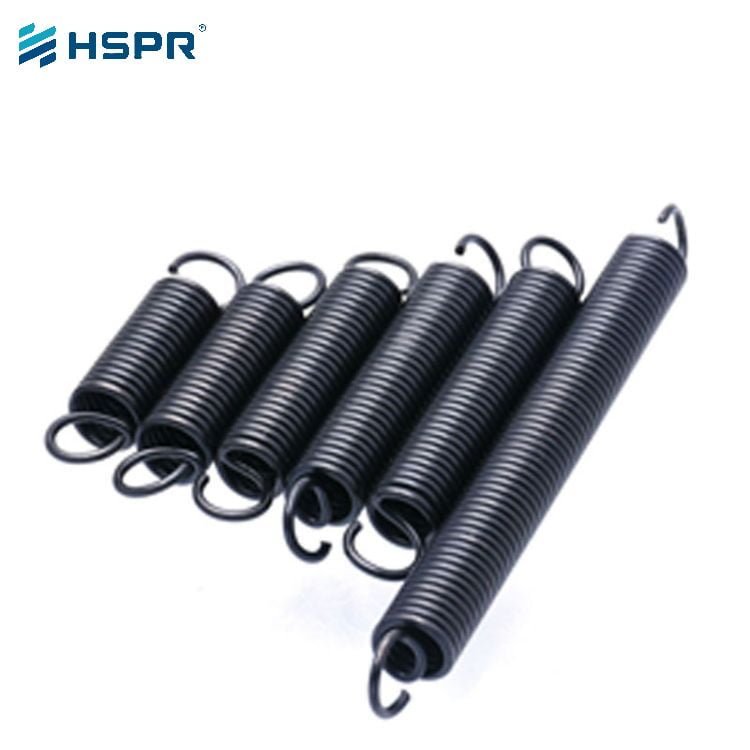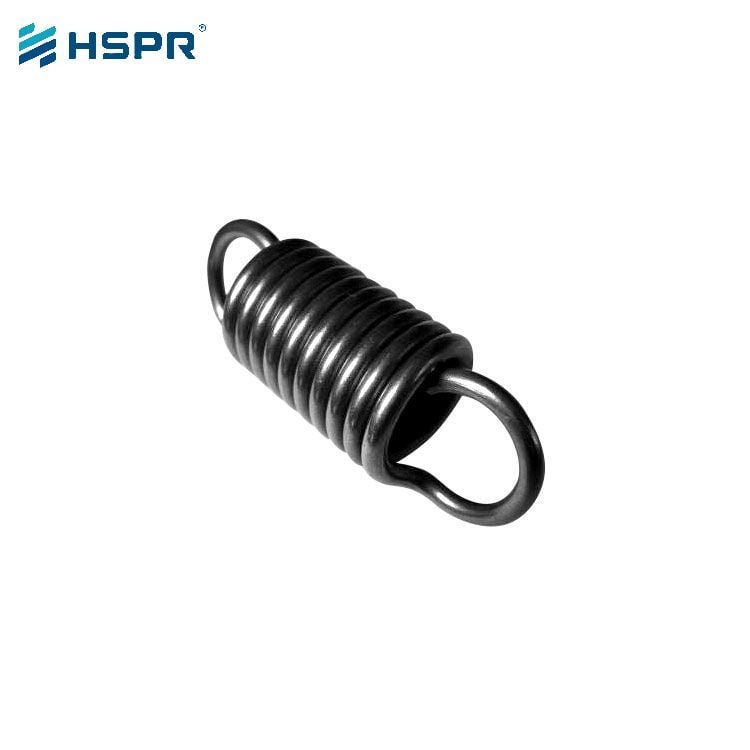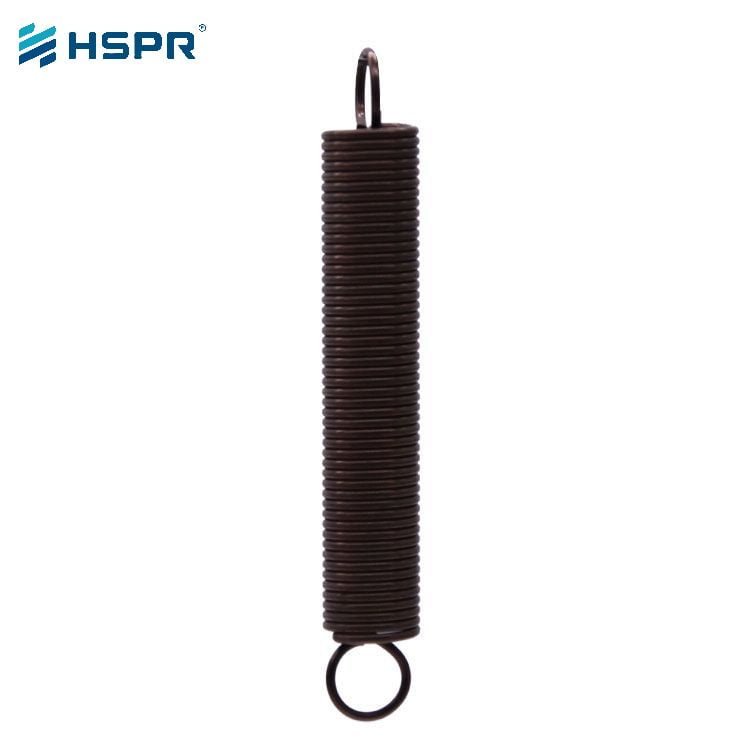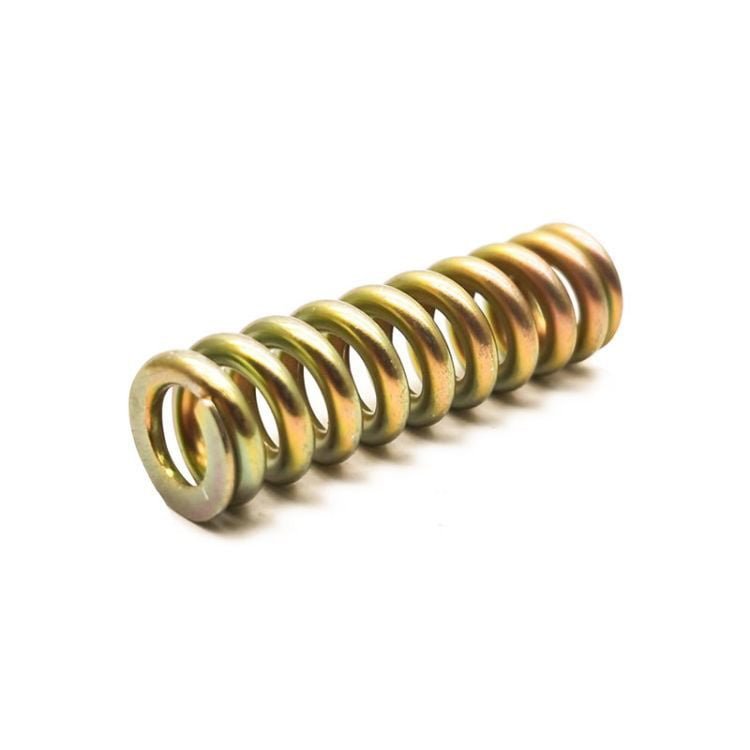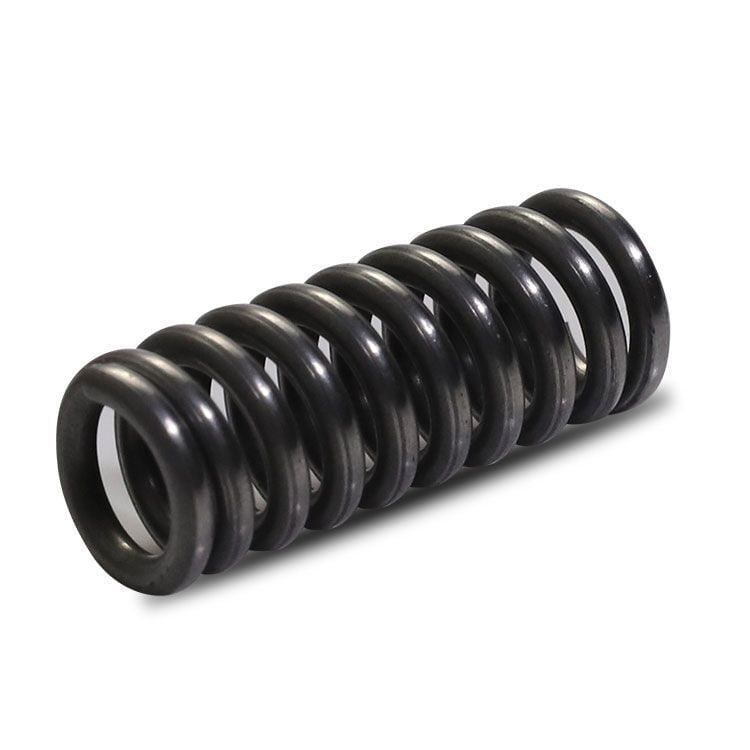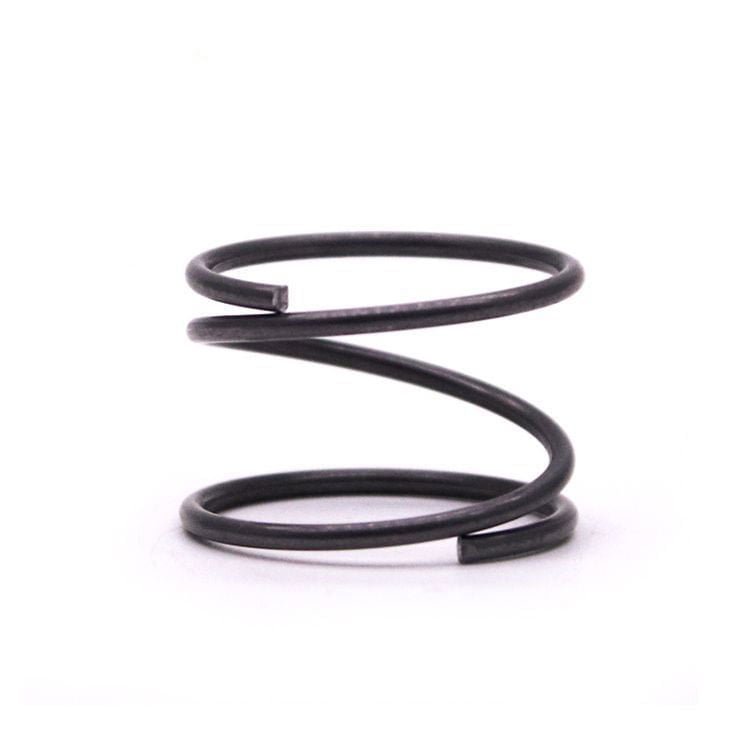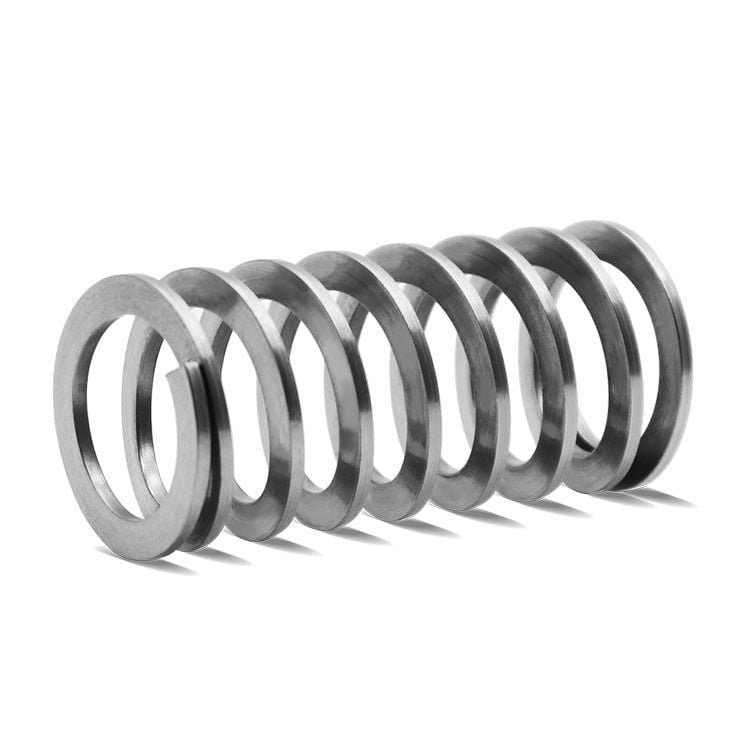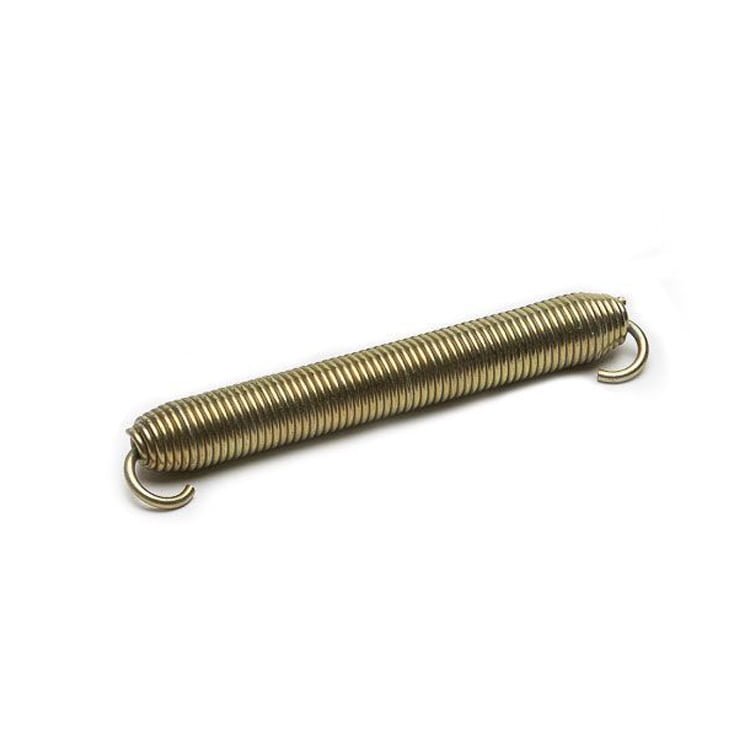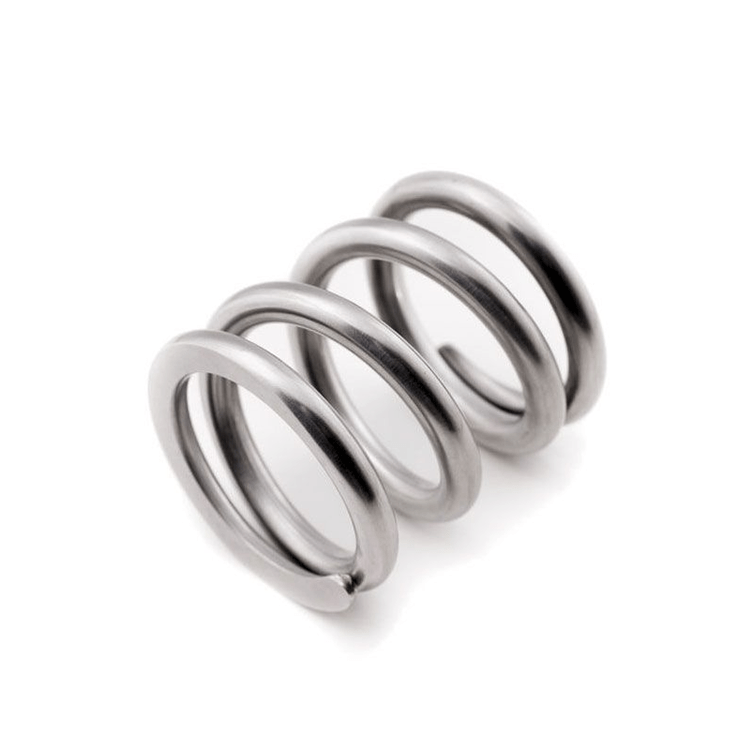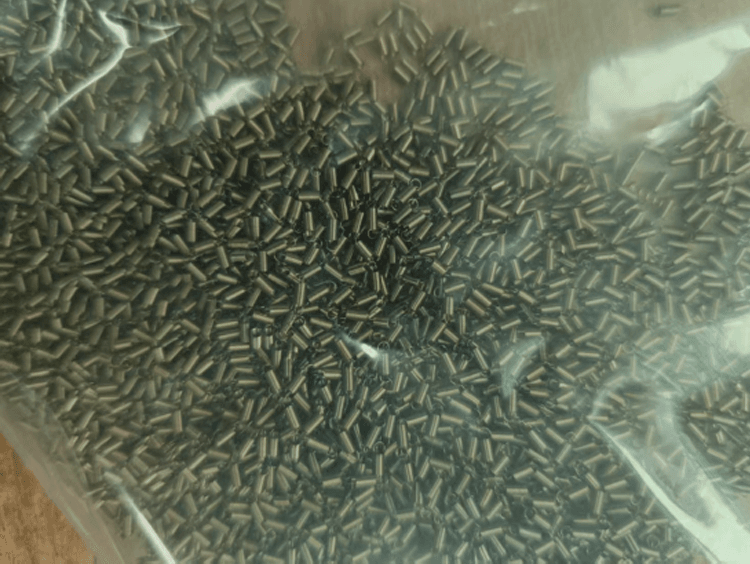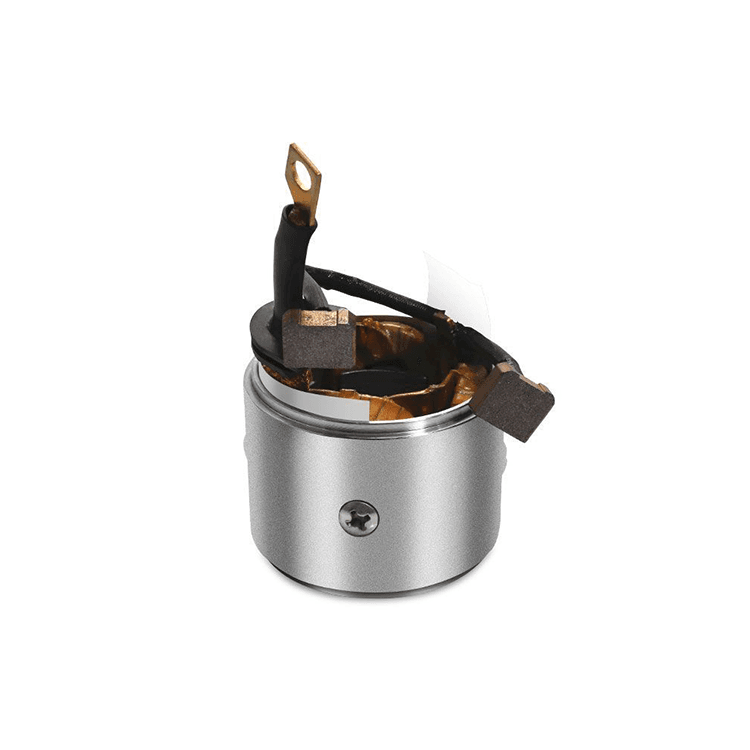Extension spring end types
The extension spring end types can have a variety of different end types depending on its application. The extension springs are available in a variety of hook and ring styles, each wrapped with initial tension, providing a small deflection load for a firm mounting. The initial tension is equal to the minimum force required to separate adjacent coils.
Extension spring end types come with hooks because their function is to pull the coil apart. These hooks will be attached to certain parts that will participate in the cycle of stretching the spring and returning it to a free, preloaded or unloaded state.
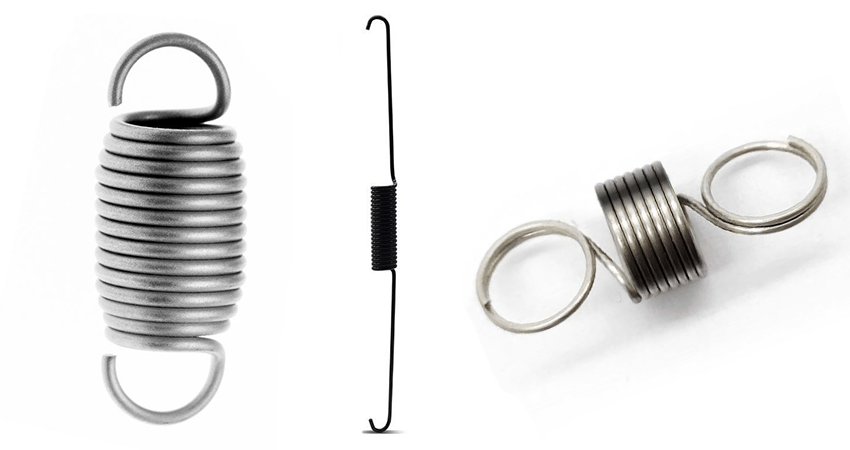
Extension spring end types:
Hook
The most common extension spring end types is a mechanical hook. There are also types of hooks: cross hooks, side hooks and extended hooks. The wire at the end of the coil forms a hook across the final coil.
- Mechanical hooks: One of the most commonly used types of hooks, these hooks are suitable for most applications because the bend radius of the making of the hook is not as obvious, they are made by bending the coil by 3/4.
- Cross hook: This is the second most commonly used type of hook. The bend radius required to make this hook is more pronounced. This kind of hook is made by lifting the last loop (such as the side hook) and twisting the loop towards the middle to pass through the center.
- Side hooks: Side hooks are necessary when the spring body cannot interfere with the mechanical parts. This is because the hook is located on one side of the spring, so the other side of the spring is offset. Side hooks are made by simply bending the last coil and are therefore more economical than cross-center hooks.
- Extension hook: The function or use of extension hook is very similar to that of side hook. Lengthening hooks are also very useful when you need a longer inside hook but a shorter hook body length to get more force out of the spring through fewer coils. This is the most expensive type of hook.
Ring
The extension spring end types has a full ring, side ring, double ring and double ring. The full ring end type is located in the middle of the stretch spring coil, while the side ring has an offset ring at the outside diameter of the extension spring end types. The two-ring configuration enhances the interface because the ring end lines touch, thus enhancing the circular ring end type.
No hook/ring
extension spring end types can also be customized with no hook or loop end types. Compared with the hook, no hook and no loop has a great advantage. Because there’s no stress or fatigue at the extension spring ends,And it is the lowest cost to manufacture stretch springs.The tension and tension distance increase, and the service life of the spring is also greatly increased. No hook allows you to use a bolt to screw in the inner diameter of a tension or tension spring, thereby securing the end of the spring.
A stretch spring with this type of end is sometimes called an extension cord. The spring end is usually fixed directly to the bolt head at the spring end line. There is no hook or ring end to eliminate the stress problem in these positions, resulting in a longer service life of the spring, as the hook and ring end are more prone to wear.
Stretch springs are designed to provide extension when someone or something pulls the spring away from its basic length. The end of the stretch spring usually consists of a hook or ring that is attached to the part that pulls the tension of the spring. During periods of no tension, the spring returns to its no-load or pre-load state.
Extension spring types can be used in different places depending on their end type, the more common use is to push rod, shake horses, screen doors and trampolines, but they can also be used anywhere that requires extension force.
